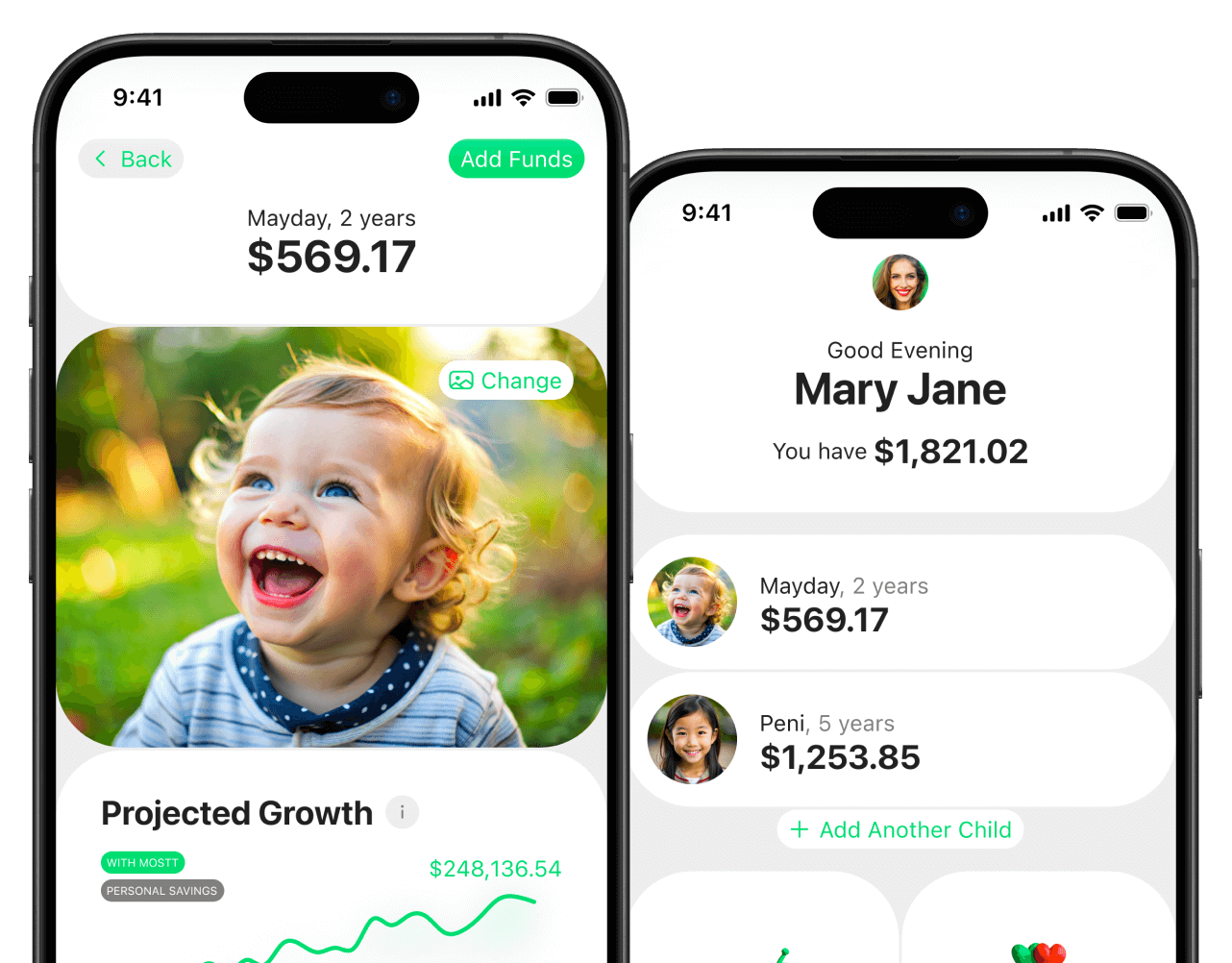Investing for your family’s future often feels like trying to read a map in the dark. You want to get your kids on the right path, but the directions can be confusing, and the journey seems overwhelming. Financial jargon, complicated options, and the fear of making mistakes leave many parents stuck in hesitation.
But what if investing for your kids could be simple, clear, and even empowering? What if you could start today — no financial degree required — and build a lasting foundation for your family’s future?
That’s why we want to answer the five most common questions parents ask about family investing. And once you have these answers, investing stops being a mystery and starts becoming a powerful tool.
1. When Should I Start Investing for My Kids?
If there’s one piece of advice that every parent should hear, it’s this: start as early as possible.
Time is the secret weapon in investing. When you start early, even small amounts can snowball into significant sums thanks to compound interest — where your money earns returns, and then those returns earn returns, like a snowball rolling down a hill getting bigger and bigger.
Here’s an example that might surprise you: Say you start investing $50 a month for your newborn. With an average annual return of 7%, by the time your child turns 18, that investment could grow to more than $20,000. Now imagine if you started at age 10 instead. You’d have to contribute almost twice as much each month just to catch up.
Starting early doesn’t mean you need to be perfect or invest a fortune. It just means you begin, even if it’s with a modest amount. Every dollar invested today has the potential to become several dollars down the road.
The biggest mistake many parents make is waiting for the “right time” — a better job, a bigger paycheck, or feeling more financially secure. But waiting means missing out on years of growth.
Pro Tip: Set up automatic monthly contributions. This way, your investing happens on autopilot, and you’re less tempted to skip it.
Learn more about the power of compound interest and why starting early matters here:
Investopedia: Compound Interest
2. What Kind of Investment Account Should I Use?
The world of investment accounts can feel like a maze. With 529 plans, custodial accounts, and brokerage accounts, choosing the right one is a common source of confusion.
The best account for your family depends largely on your goals.
-
529 College Savings Plans are specifically designed to help parents save for education. The biggest perk? Earnings grow tax-free when used for qualified educational expenses like tuition, books, and sometimes room and board. Plus, some states offer tax deductions or credits for contributions. However, if your child decides not to go to college or you want more flexibility, 529 plans have some restrictions and penalties for non-education use.
-
Custodial Accounts (UTMA/UGMA) are accounts where you invest in your child’s name, but you control the money until they reach the age of majority (usually 18 or 21). These accounts give you more flexibility on how the funds can be used — for anything that benefits the child. But be aware that earnings in these accounts are subject to taxes each year, and once the child takes control, they could potentially use the money in ways you hadn’t planned.
-
Regular Brokerage Accounts opened by parents can also be a good choice if you want full control and flexibility. These don’t have the tax benefits of 529s but also don’t have the same restrictions.
One thing to keep in mind: Many parents worry about how investment accounts will affect their child’s eligibility for scholarships or financial aid. Custodial accounts and 529s are considered differently in financial aid calculations, so understanding those rules is important.
If this still feels overwhelming, consider working with a financial advisor or planner who can help you pick the best option based on your family’s financial goals.
For a straightforward comparison of investment accounts for kids, check out:
Fidelity’s Guide on Investment Accounts for Kids
3. How Much Money Should I Be Putting In?
There’s no perfect answer here — because every family’s financial situation and goals are unique. But here’s some good news: You don’t need to start with a huge sum to make a difference.
The most important factor is consistency over time. Even $25 or $50 a month can add up, especially if you start when your child is young.
Let’s say your goal is to save $10,000 by the time your child is 18. Using an average 7% return, you would need to invest about $40 a month from birth to reach that goal. If you start later, the monthly amount increases because the money has less time to grow.
It’s tempting to wait until you feel like you “have enough” money to invest, but that mindset often leads to missed opportunities. The best approach is to invest what you can afford comfortably — without stretching your budget too thin.
If you’re not sure where to start, use online calculators. Many websites let you plug in your monthly contribution, expected rate of return, and years until your child turns 18 to see how much you could accumulate.
Tip: Make your investment contributions automatic so you don’t have to think about it every month. Automatic investing keeps you disciplined and consistent.
Remember: The best plan is one you can stick with.
4. What If I’m Worried About the Market Crashing?
Market volatility is scary. You put money in, see it go down, and you want to pull out immediately — only to worry about missing the rebound.
But here’s the reality: Market ups and downs are normal. Historically, markets have bounced back and grown over the long term.
When investing for your child’s future, especially over 10 or 15 years, you want to focus on time in the market, not timing the market.
Trying to predict when to buy and sell rarely works — even professional investors get it wrong. Instead, your best strategy is to stay invested consistently, ride out the ups and downs, and let time work in your favor.
Also, diversification helps smooth out risk. This means spreading your investments across different asset types — stocks, bonds, maybe even real estate funds — so a downturn in one area doesn’t wipe you out.
If market swings still keep you up at night, you can reduce risk by choosing more conservative investments or allocating more money to bonds as your child gets closer to using the money.
Finally, remember your goal: Long-term growth. The market isn’t a sprint; it’s a marathon.
For a deeper dive into handling market volatility, check out:
Vanguard’s Guide on Market Volatility
5. Can My Kids Help Manage Their Investments?
Here’s the thing: Investing for your kids is more than just money — it’s about teaching them habits and lessons that last a lifetime.
Getting your kids involved in their investments is one of the best ways to build financial literacy. It empowers them to understand money, risk, and the value of delayed gratification.
If you open a custodial account, your child will eventually take control when they reach adulthood. Why not use that transition as a teaching moment? Start talking about investments early — show them statements, explain what stocks and bonds are, and involve them in decisions.
Even younger kids can learn about money through simple conversations and games. Older kids and teens can learn to research companies, pick stocks, or decide how to allocate their portfolio.
This hands-on approach builds confidence and a sense of responsibility. When kids see their investments grow over time, it teaches the power of patience and smart choices.
Remember, the goal isn’t to make your child a professional investor by age 10. It’s to build a strong foundation that will serve them well for life.
Final Thoughts
Investing for your family’s future might feel intimidating at first. But it doesn’t have to be. The key is starting early, picking the right accounts for your goals, investing what you can afford consistently, staying calm through market ups and downs, and bringing your kids along for the journey.
When you do these things, you’re not just building financial wealth — you’re building financial confidence for your entire family.
If you’re ready to get started but don’t know where to begin, consider tools like Mostt.co, which help parents invest for their kids with low minimums and easy setup. No complicated jargon — just simple, smart investing designed for families.
The best investment you can make is in your child’s future. The earlier you start, the greater the opportunity for a lifetime of financial security.




